The Feast of the Seven Fishes. A practical guide with 7 recipes from 7 Italian food writers
The Feast of the Seven Fishes is an Italo-American tradition, a grand meal to ring in Christmas Eve, when Roman Catholics celebrate the midnight birth of Jesus.
Less than two weeks to Christmas, and in our apartment in the Tuscan countryside Christmas has arrived. It has the sound of tiny feet rushing to open the Advent calendar in the dark of early morning and the taste of panforte nibbled after lunch with a coffee. The twinkling lights of our old Christmas tree turn even the gloomiest day into a celebration of this magical moment. Livia’s enthusiasm and wonder are infectious.
Today we’ll welcome our last students of the year for our December Three Day Masterclass, then we’ll take a couple of weeks to rest, reset, and rejoice in some much overdo family time.
In Italy the Christmas festivities usually begin on December the 8th, with the celebration of the Immaculate Conception, the day we usually unwrap the first panettone and decorate the Christmas tree. From that moment on, it is usually a whirlwind of bigger and smaller occasions to meet, hug, and eat. Mainly eat.
Even though it slightly changes from region to region, and from family to family, three are the days where the celebrations are corralled: a dinner on Christmas Eve (il cenone della Vigilia)—or sometimes a lunch—, a lunch on Christmas Day (il pranzo di Natale), and a lunch on the 26th of December, Saint Stephen’s Day, or Boxing Day (il pranzo di Santo Stefano).
Three days of food that often leave you floored.
Growing up, we didn’t gather for Christmas Eve, as our dinner was often quite frugal, something to nibble on before attending the 9 pm mass. If the Midnight Mass is usually grand and crowded, the 9 pm Mass in our local countryside church was intimate, attended mainly by old women, the smell of chicken stock, ragù and lasagna still lingering on their woollen coats.
When I met Tommaso we started celebrating Christmas Eve, partly influenced by the Apulian tradition of a fish-centered dinner, partly to have yet another chance to meet with another branch of the family.
Christmas Day begins with breakfast with panettone dunked in a cup of hot tea, gifts unwrapping—something that is becoming more and more joyous and exhilarating now that Livia is growing up—and unfurls in a family lunch that stretches well into the afternoon.
Saint Stephen’s Day lunch is an excuse to stretch the festivities and carve out yet another day to eat and be merry. You would think that leftovers are enough to celebrate, but usually, we plot a new menu altogether.
When do you usually celebrate Christmas? Is it lunch or dinner? Which is the typical menu?
So where’s the Feast of the Seven Fishes, you might wonder.
Even though on Christmas Eve we tend to eat fish, as it was traditionally considered a fasting day by the Catholic religion—thus requiring to avoid red meat—, there’s nothing like the Feast of the Seven Fishes in Italy, something we got to know mainly thanks to The Bear!
The Feast of the Seven Fishes is an Italo-American tradition, a grand meal to ring on Christmas Eve, when Roman Catholics celebrate the midnight birth of baby Jesus.
Fish and seafood are the protagonists: each of the seven courses—seven as the sacraments—sports a different kind of fish: clams, baccalà, eel, calamari, tuna, mussels, shrimps, anchovies, tuna… you name it.
Today’s letter is a gift for you all!
Enrica involved me and five more friends in a deeply Italian Feast of the Seven Fishes. In her own words…
This year we decided to create a menu for a Christmas Eve Dinner, in the wake of the “Feast of the Steven Fish, selecting 7 traditional Italian fish recipes (often on the table during the Italian Christmas holidays), featuring 7 different fish, cooked in 7 different ways.
All dish hails from a distinct Italian region (Liguria, Piedmont, Veneto/Trentino, Emilia Romagna, Tuscany, Abruzzo, Sicily) and is a heartfelt offering from an Italian food writer deeply immersed in the culinary traditions of her homeland.
We carefully selected these dishes to create a balanced and harmonious menu, ensuring ease of preparation in the kitchen, never forgetting, though, the complexity of having 7 different seafood dishes on the table.
Please, enjoy this “Christmas capsule” of Italian food traditions, make it yours or just take inspiration, share it with your loved ones and have fun in the kitchen for making your Christmas Eve dinner deeply Italian (whether or not you are actually going to bring on the table 7 fish!)
These are the friends involved in the project:
Enrica Monzani, from Liguria,
here on Substack, (read Enrica’s Q&A here), with Brandacujun (potatoes and stockfish spread) croutonsCarlotta Panza, from Piedmont,
here on Substack, with Bagna Cauda (anchovy and garlic sauce with raw vegetables)Valentina Raffaelli, from Trentino, @valentina.raffaelli on IG, (read Valentina’s Q&A here) with Roasted Polenta with marinated herrings
Monica Compagnoli, from Emilia Romagna,
here on Substack, with Tuna Spaghetti alla BologneseDomenica Marchetti, from Abruzzo, Buona Domenicahere on Substack, with Gabriella’s stewed calamari.
Fabrizia Lanza, from Sicily, @fabrizialanza on IG, with Double-crust swordfish pie.
And here you can download the pdf with the seven recipes.
Here you can find my recipe, an Oven Baked Sea Bream with Potatoes, along with a few tips on how to clean your own fish and get it ready for the oven.
RECIPE - Pesce all’Isolana - Oven Baked Sea Bream with Potatoes
I learned to make pesce all’isolana - a very Mediterranean dish whose name translates to something like island style - while exploring the fish markets in Maremma, the southern part of Tuscany. A white fish, such as snapper, sea bream, or sea bass, is usually prepared over a bed of potatoes and cherry tomatoes, with a splash of white wine. In the summer the fish is then covered with quality vegetables like zucchini, eggplants, or carrots, to act like a kind of edible cartoccio, or papillote, that is when the food is put into a folded pouch or parcel and then baked.
In winter, and especially for special occasions like a big family holiday or Christmas, I use just potatoes and onions, and a scatter of joyful cherry tomatoes.
It is a straightforward, simple dish that requires just a little preparation and care to make it perfect. With just one dish, you have a festive main course and a side to accompany it.
Notes.
Any white wish would work in this recipe: sea bream, sea bass, snapper.
Instead of a whole fish, you can use fish fillets. The roasting time will be reduced, so test them with a kitchen thermometer to check their inside temperature for doneness.
How to clean a fish to roast it in the oven.
Ask your fishmonger if they can prepare the fish for you to roast it in the oven. Otherwise, that’s how you can do it.
Use kitchen scissors to remove all the fins: they are pretty sharp and dangerous when you descale the fish.
Now, using a paper towel to hold the fishtail, run the back of a knife from the tail to the head to scrape off the scales. To prevent the scales from flying everywhere, you can either do this in the sink or a large plastic bag.
It is time to gut the fish. Placing one hand on the upper side of the fish, insert the point of a filleting knife into the vent hole and cut the belly open to just behind the head of the fish. Pull away all the guts.
Now run the filleting knife on the opposite side of the fish, on the back, to carve out a pocket that goes from the head to the tail. Keeping it flat, run the filleting knife right above the scale. This will help you better cook the fish.
Rinse the fish under cold running water to remove any loose scales and to remove any blood. Pat the fish dry with kitchen paper. Keep it in the fridge until it is time to roast it.
Variations.
In Puglia, they add a sprinkle of grated Pecorino cheese to this dish, breaking an unwritten rule of the Italian culinary tradition that instructs never to mix cheese and seafood.
Serves 4
4 medium potatoes
2 sea breams, about 500 grams (just over 1 lb) each, scaled and cleaned
2 cloves garlic, thinly sliced
Fresh thyme
½ onion, red or golden, thinly sliced
1 handful cherry tomatoes, halved
¼ cup/60 ml dry white wine
Extra virgin olive oil
Fine sea salt and freshly ground black pepper
Peel and slice the potatoes into even, paper-thin rounds. Slice them as thin as possible, so they will have time to cook while the fish is roasting. Collect the potatoes in a bowl and cover them with cold water. Set aside for 10 minutes.
Now prepare the fish. Lightly sprinkle the inside cavity of the fish and the pocket you carved on the back with salt and pepper, add some fresh thyme, the thinly sliced garlic, and finish with a drizzle of olive oil. Repeat with the other fish.
Preheat the oven to 200°C/400°F.
Grease a rimmed baking sheet with olive oil. Drain the potatoes and pat them dry with a clean kitchen towel. Arrange two third of the potatoes on the baking sheet in a single layer. Scatter half of the onion rounds on the potatoes and sprinkle with salt and pepper.
Arrange the two seabreams on top of the potatoes, then cover them with the remaining potato slices. Scatter with the remaining onions and with the halved cherry tomatoes.
Drizzle with olive oil, then season with salt and freshly ground black pepper.
Transfer the seabreams to the hot oven, and roast for about 20 minutes. After 20 minutes, pour the white wine over the fish to keep it moist while cooking, then roast for 15 more minutes, or until you can start smelling a lovely aroma of roasted fish. To double-check the doneness of the fish, use a thermometer inserted into the thickest part of the fish: it should read 65°C/145°F.
It is better to privilege the fish over the potatoes when roasting them, as an overcooked fish will be dry and stringy. So if the fish is ready, remove the tray from the oven and carefully transfer the fish to a warmed serving plate, lifting them with two spatulas.
Check the potatoes: if they are golden brown and cooked through, arrange them next to the fish and serve, otherwise transfer them back into the oven to finish cooking. In the meantime, you can slice the fish into fillets.
Serve the fish accompanied by the potatoes.




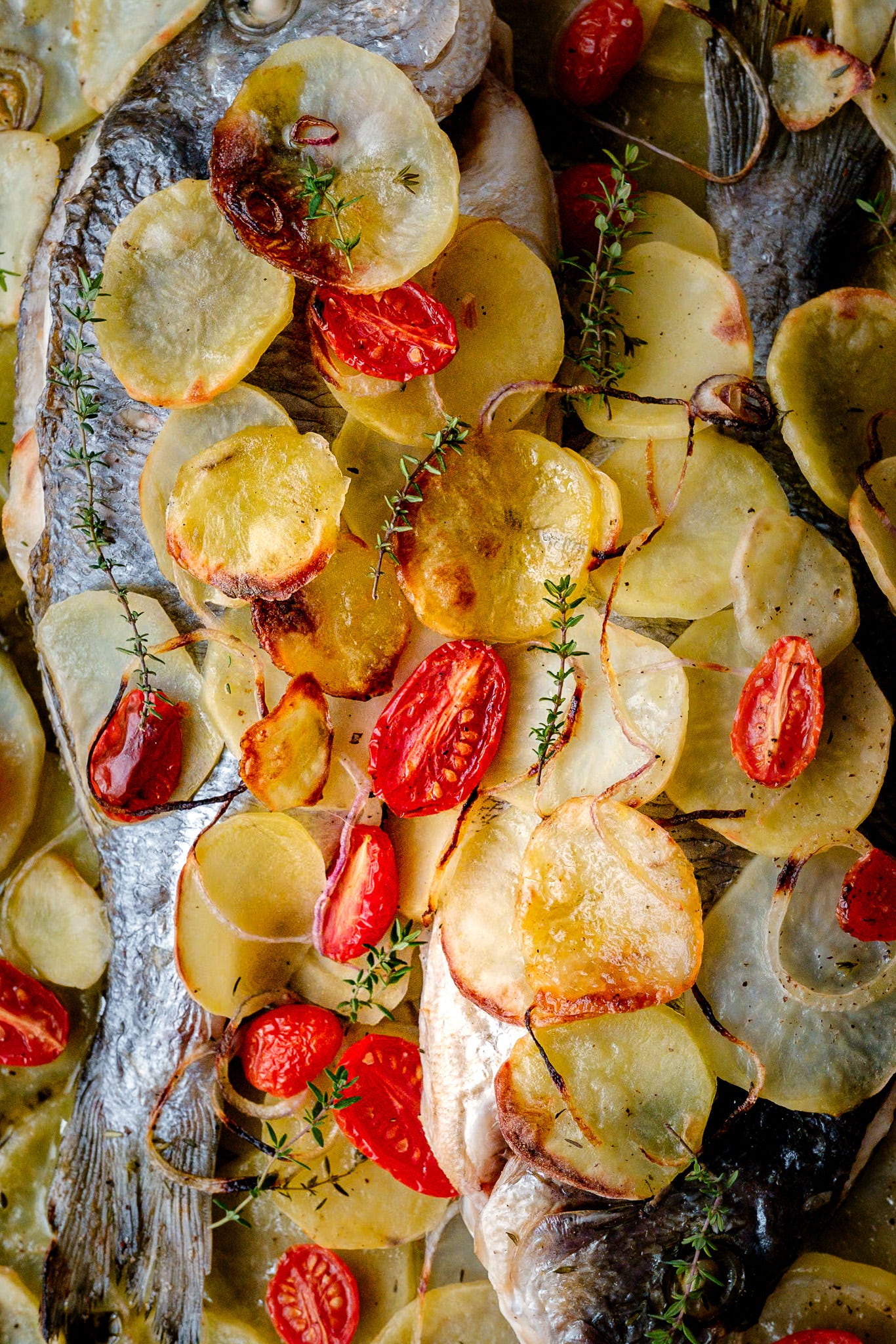
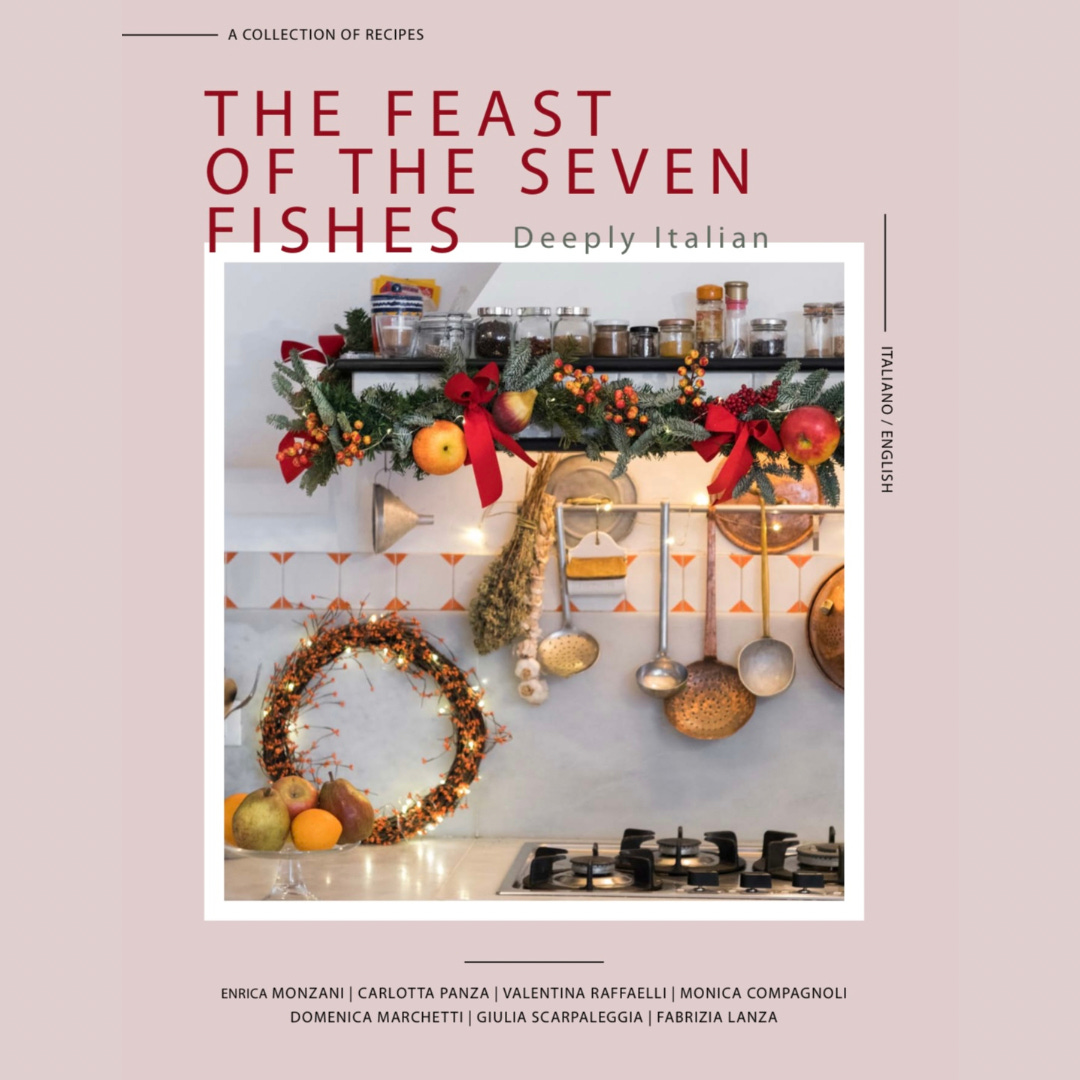
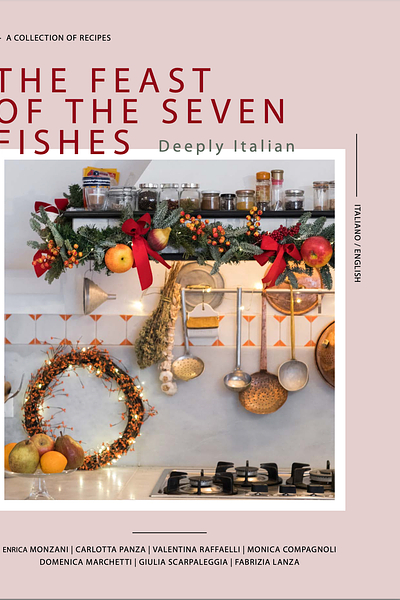
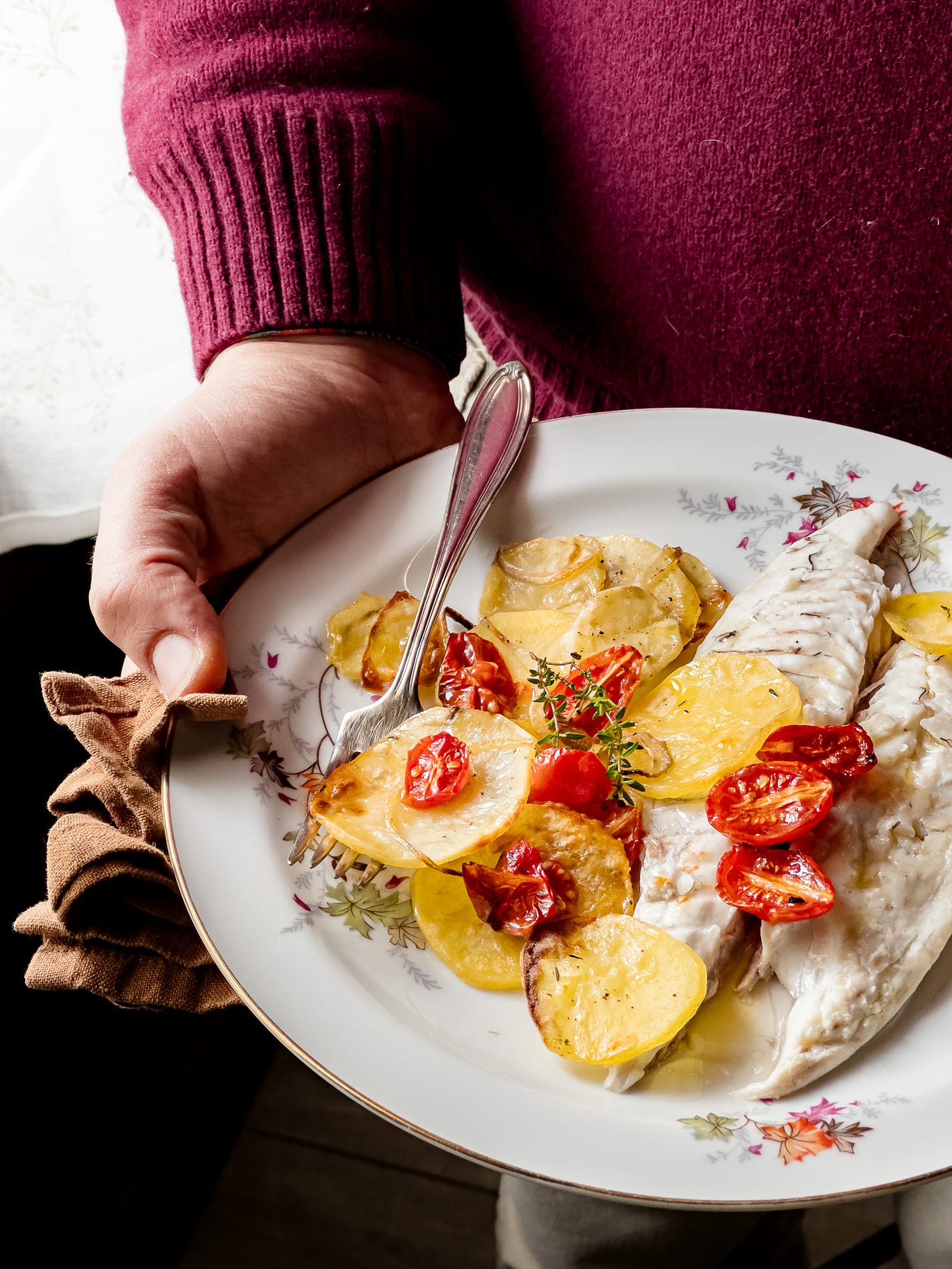
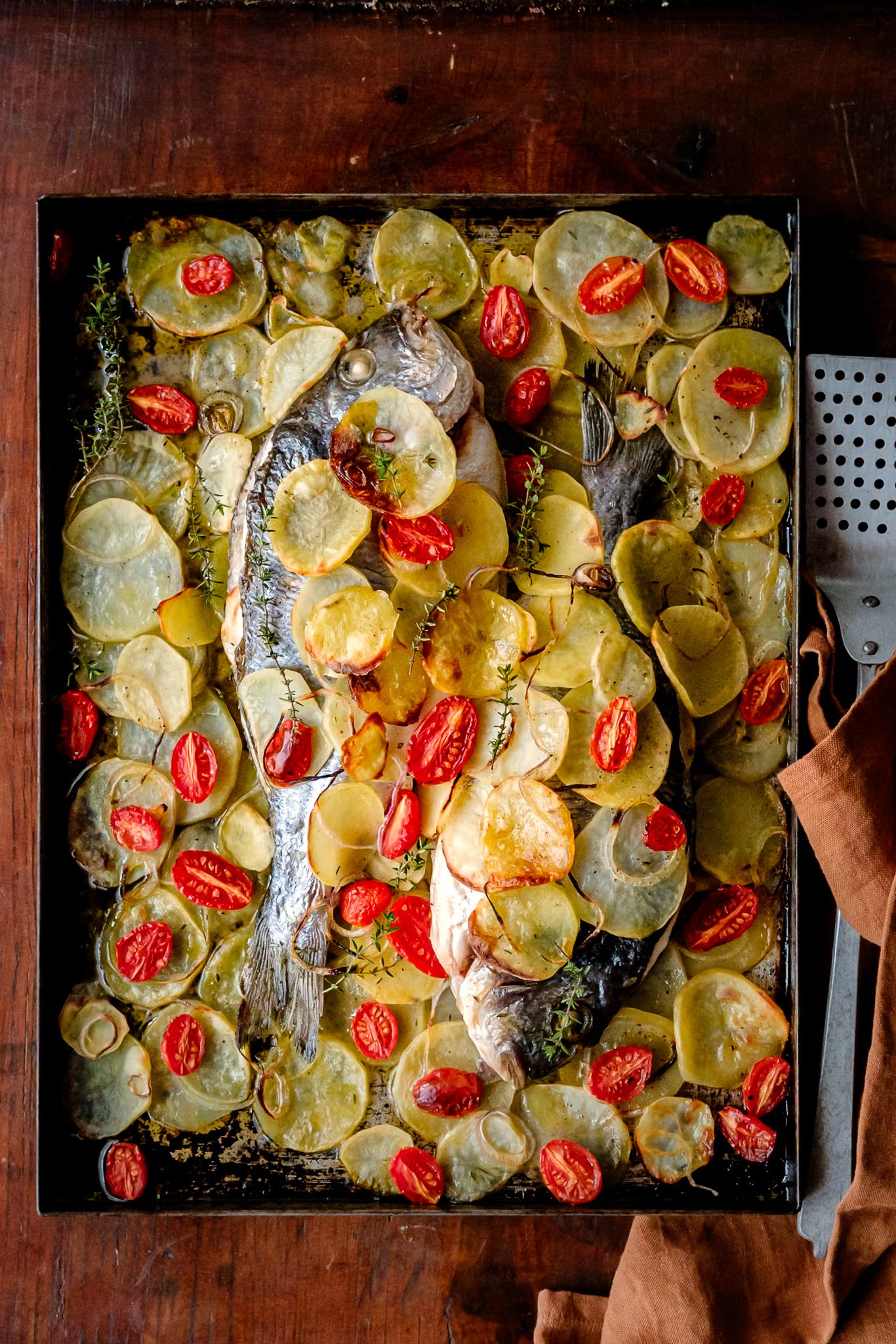
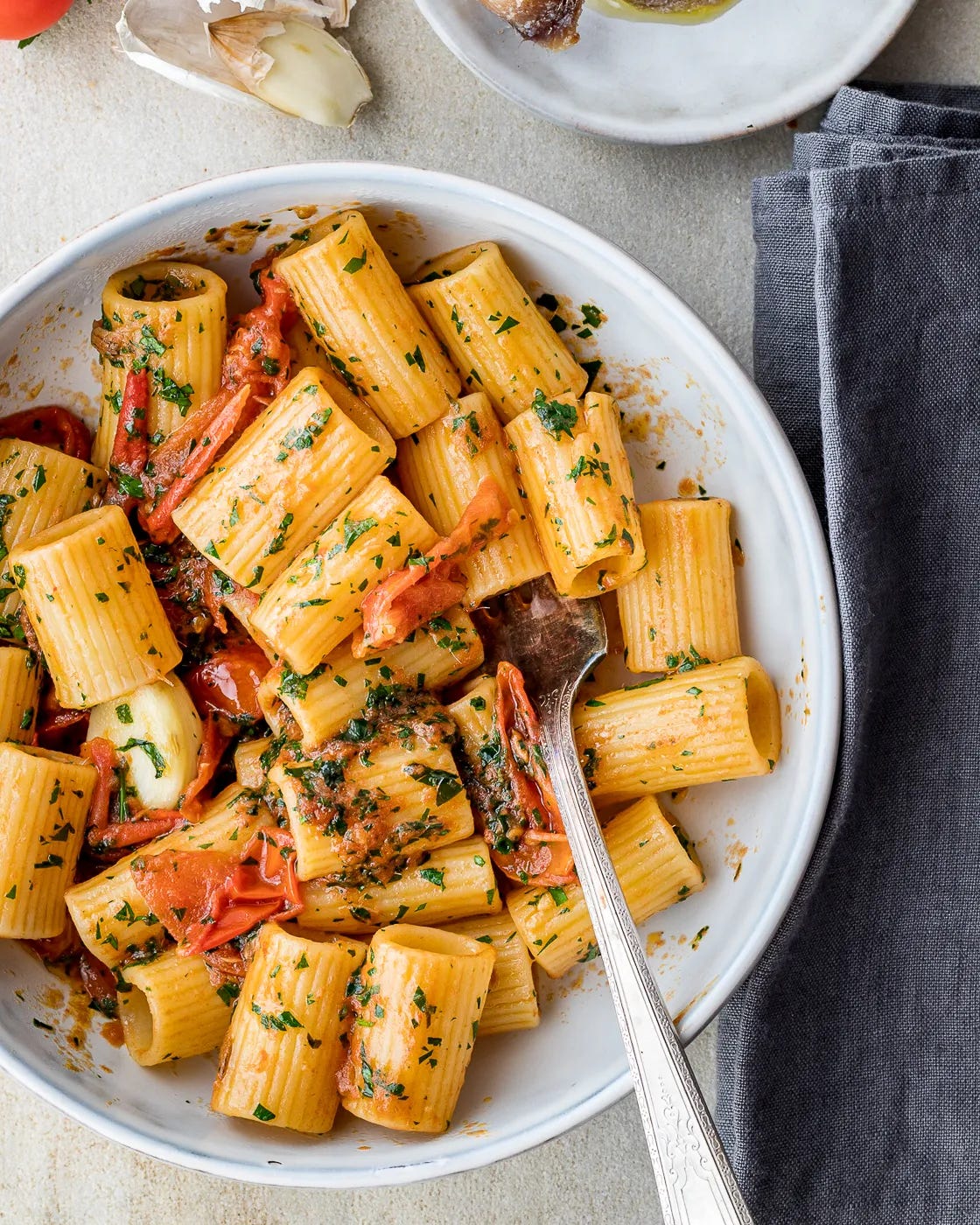
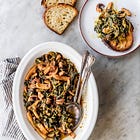
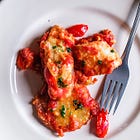
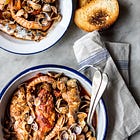
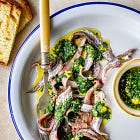
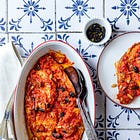
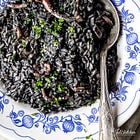
This is fabulous! We do a less classy version called Merry Fishmas 😂 I'll be sure to include some of these recipes for our Christmas lunch.
Thank you for the treasure chest of recipes, Italian culture and history. The download is a lovely little book all on its own! Thank you for it--it's very well done!